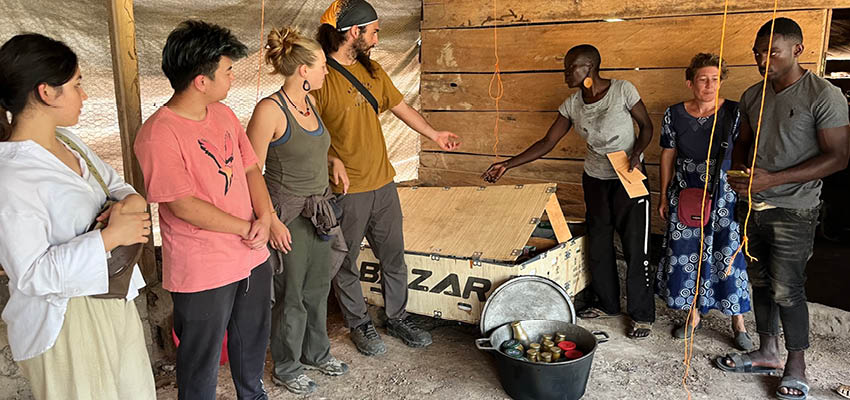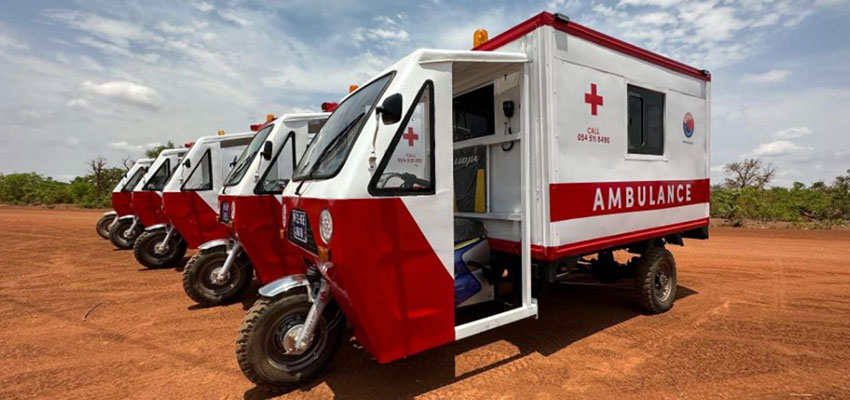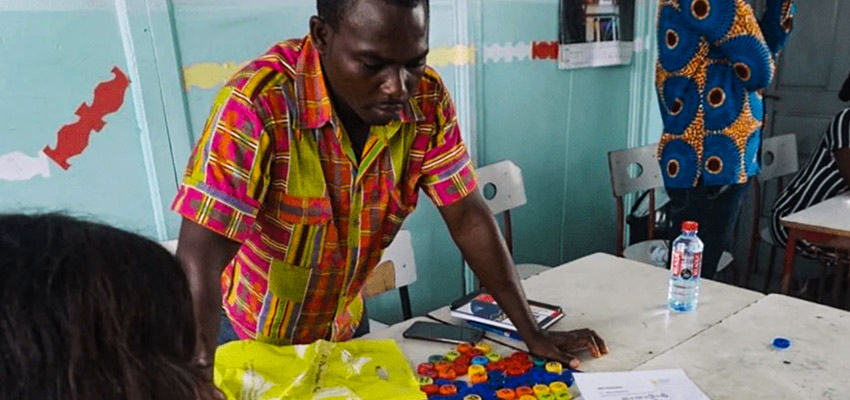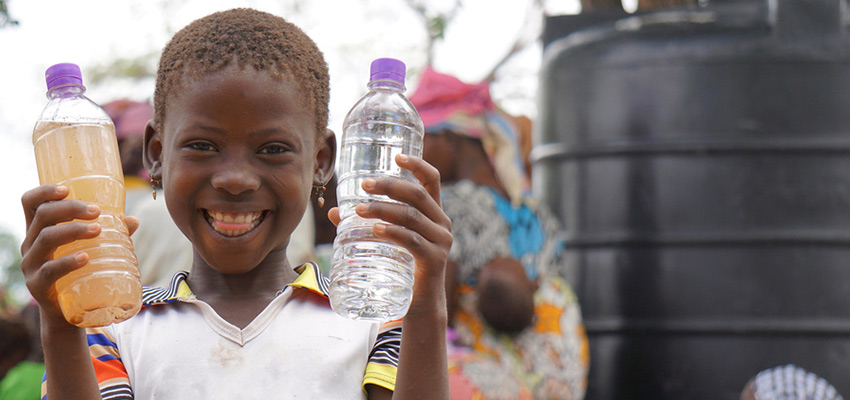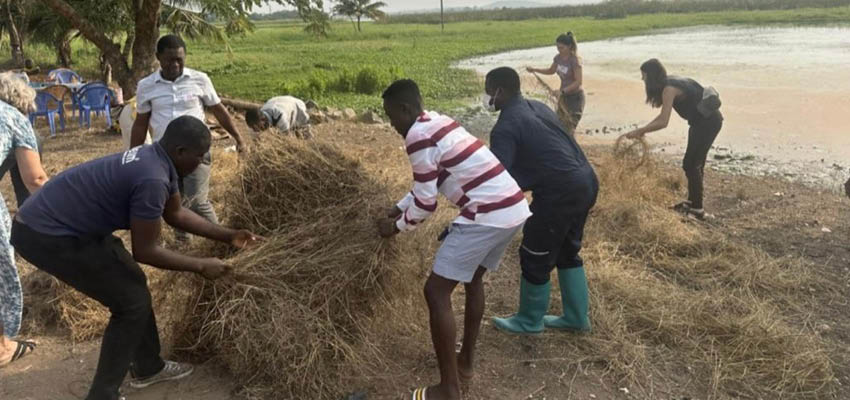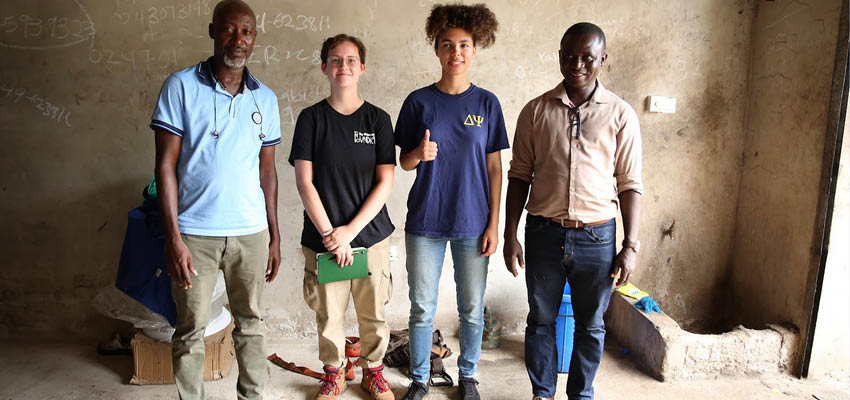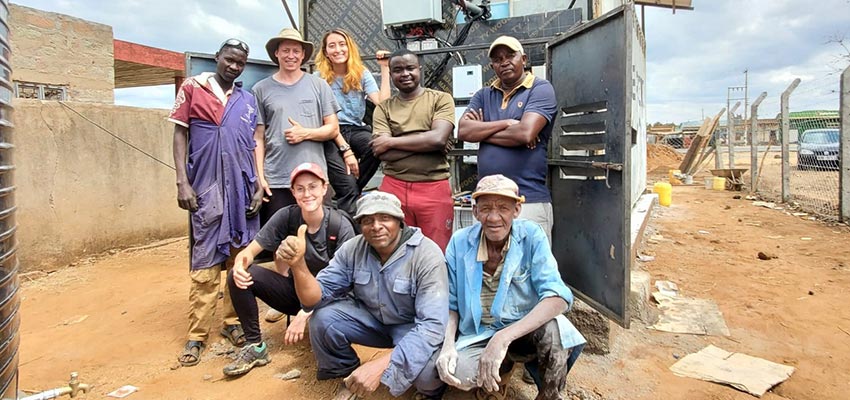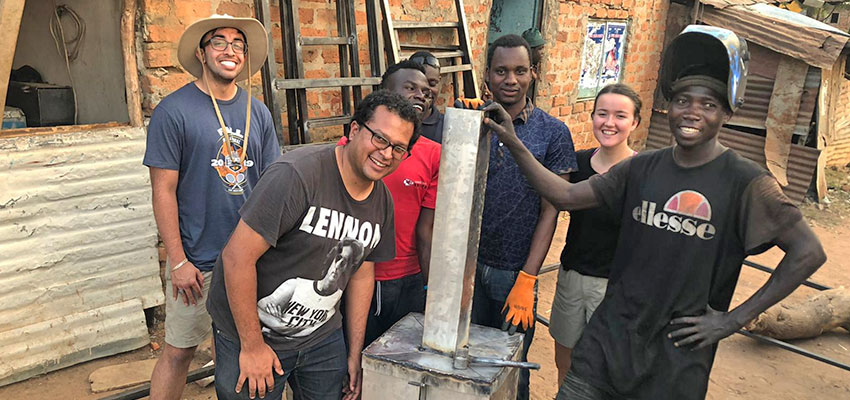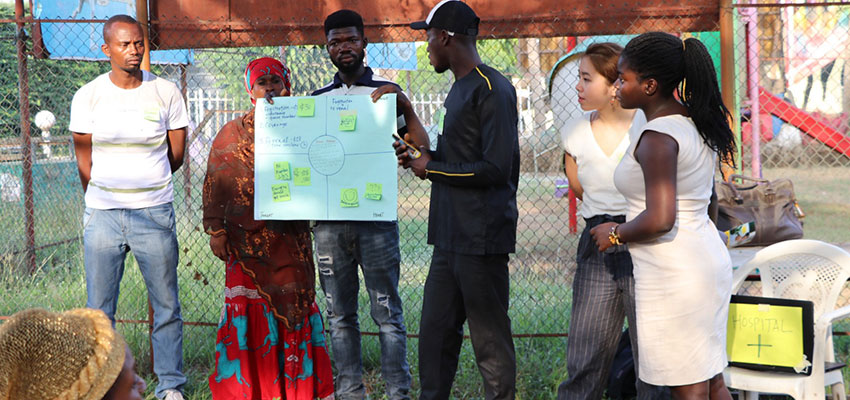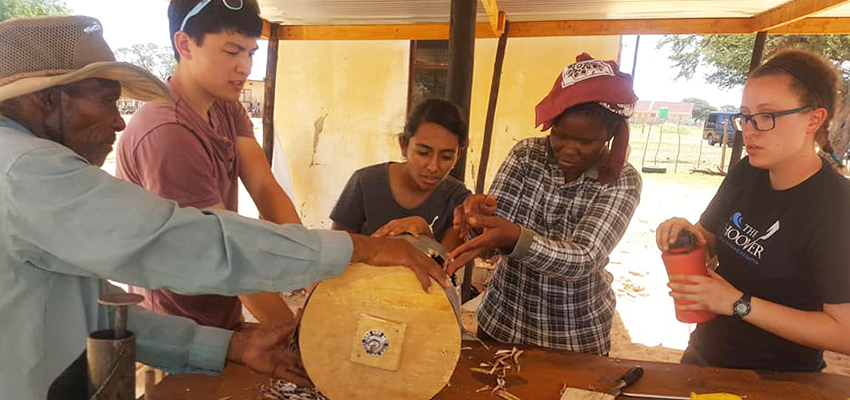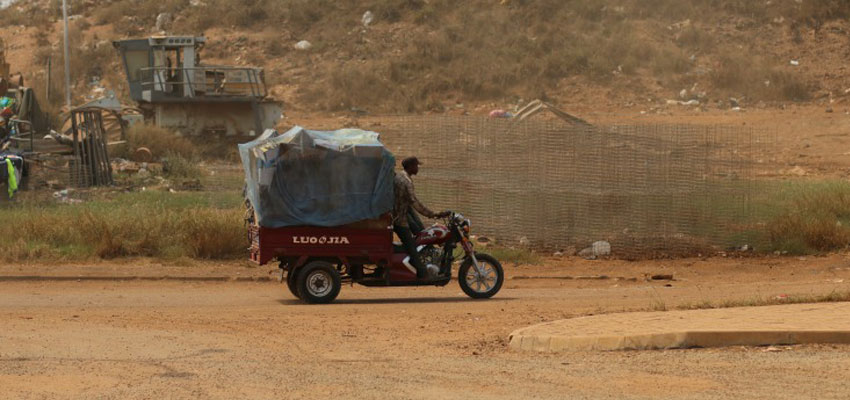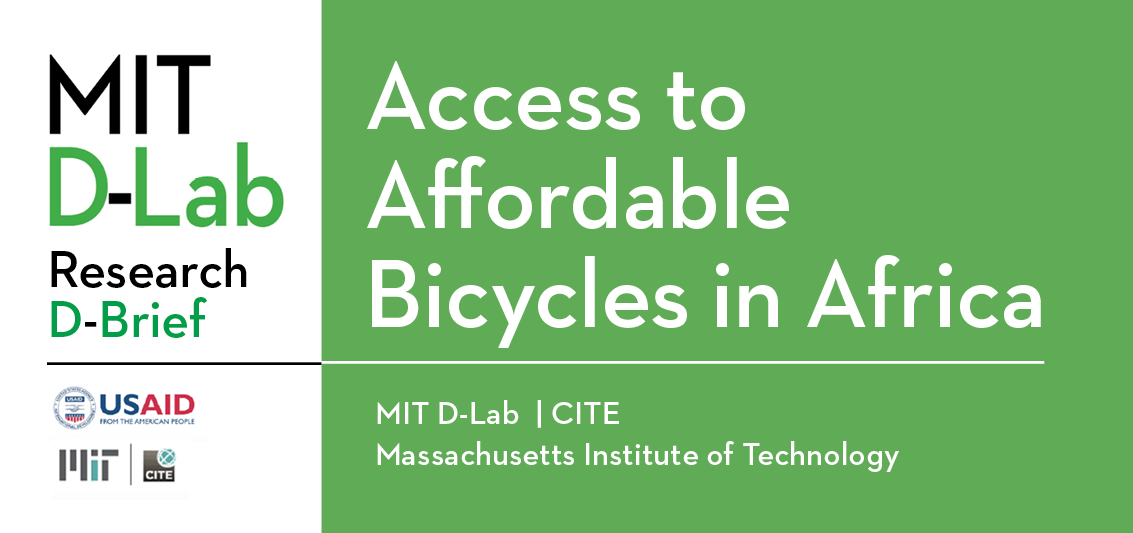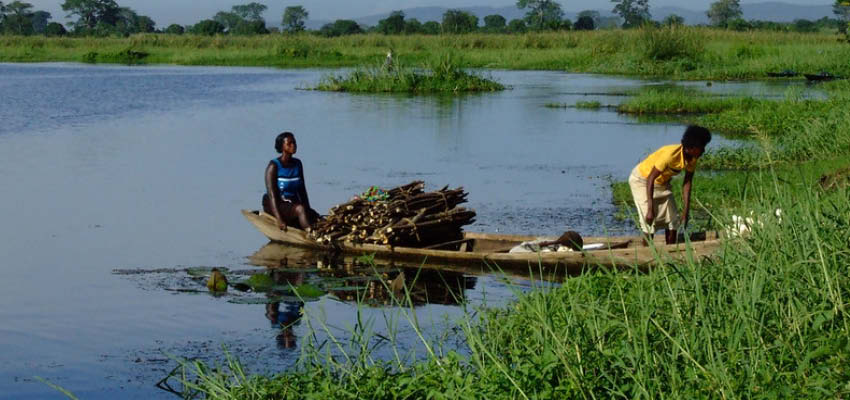
Addressing the issue of invasive aquatic weed overgrowth in the Lake Volta reservoir through mechanical dewatering of the harvested lake weeds for potential conversion of dried weeds into usable charcoal or other goods.
MIT D-Lab class
Applications of Energy in Global Development
Community partners
- Kwame Nkrumah University of Science and Technology (KNUST)
- Eric Asante: KNUST Professor
- Mohammed, Lydia, Rockson: KNUST students
- Johnson Asante & Ken D: KNUST Technology Consultancy Centre
- Volta River Authority (electricity service provider in Ghana and West Africa)
- Volta Invasive Species Transformation Alliance
- Akosombo Industrial Company Limited
- Phillip Osafo-Kwaako, Director
- Jerry Addai Marfo, Engineering Manager
- Ken Boateng, Ag CEO
- Town of Kpong, Ghana
- Eric
Country
Ghana
Student team
- Sanjna Ravichandar (MIT BS ‘22, MEng ‘24)
- Olyvia J Hanken-Arlen (Wellesley ‘25)
- Joshua Kuffour (MIT ‘24)
- Lianne Quaynor (Wellesley ‘24)
- Hanqi Zhang (Harvard EdM ‘24)
Project
This project addresses the issue of invasive aquatic weed overgrowth in the Lake Volta reservoir, through mechanical dewatering of the harvested lake weeds for potential conversion of dried weeds into usable charcoal or other goods.
The project focuses on addressing the issue of invasive aquatic weed overgrowth in the Lake Volta reservoir in Ghana, which has been causing disruptions to power generation, local fishing activities, and overall ecosystem management, as well as considering the local community's energy needs. Currently, the weeds are left out to dry in piles on the river bank and transported to and from landfill dump sites and do not serve a useful purpose. To tackle this challenge, this project proposes the mechanical dewatering of the harvested lake weeds and then the conversion of dried weeds into usable charcoal.
This innovative approach not only addresses environmental concerns but also opens up opportunities for energy generation. Removing water from the weeds prior to transport to a secondary disposal location also saves fuel and accelerates total solar drying times. For this project, we have been collaborating with students and faculty from Kwame Nkrumah University of Science and Technology (KNUST), Akosombo Industrial Company Limited, and community members in Kpong.
We explored two mechanical dewatering methods, implemented prototypes, and performed a comparative analysis. These methods were determined after a Pugh chart analysis of several different compression methods and feedback from design reviews.
The initial prototype was a flat compression method. The user would rotate a threaded screw at the top of the mechanism which would move a circular plate down into the bucket, which would be filled with invasive weeds. The circular plate would compress the weeds, and water would be extracted through holes along the bottom of the bucket. Although effective in reducing water quantity, this proved to be time-consuming for each use and did not have a continuous throughput. Without a continuous throughput, the user will need to manually remove the compressed weeds and re-fill the mechanism, which disrupts the workflow and takes up more time.
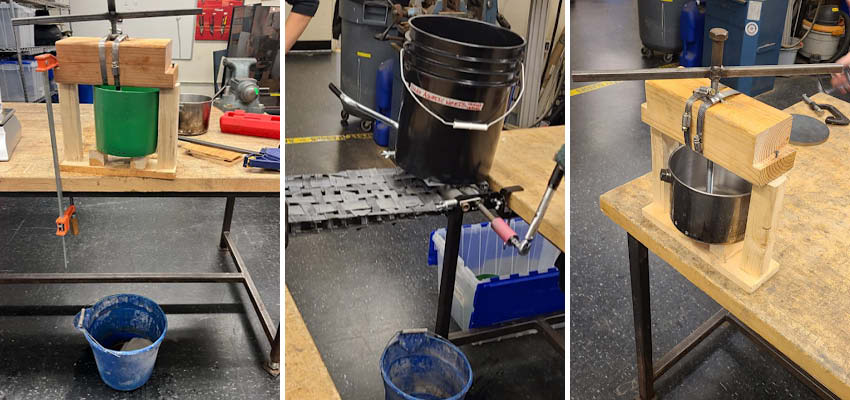
To address the continuous throughput, we then evaluated a dual-roller mechanism. The user will rotate a crank, which rotates two adjacent rollers in opposite directions. The weeds are fed into a hopper mounted above the rollers, through the rollers, and onto a belt. The rollers are set against a pair of springs, which can be adjusted for the width of the weeds that are directly passed through. The mechanism allows for continuous throughput, as the hopper can be constantly reloaded while the crank is being turned.
The torque per milliliter and operation time were compared for these two methods, where we found that the screw press yielded 0.0417 Nm/mL in 75 seconds, while the rollers 0.0878 Nm/mL in under 5 seconds. Although the screw press required approximately half as much torque as the rollers, we conclude the rollers to be more effective because the operation timing was much more efficient.
One aspect for future work on this project is scaling this mechanism up to address the massive overgrowth in the reservoir. This can include making the mechanical dewater mechanism larger such that more weeds can pass through (e.g. using longer rollers), or automating the mechanism for higher yield (e.g motorizing the crank). Future work for this project may include focusing on the heat exerted from burning the weeds to make charcoal, where this heat can be captured and repurposed for thermal dewatering.
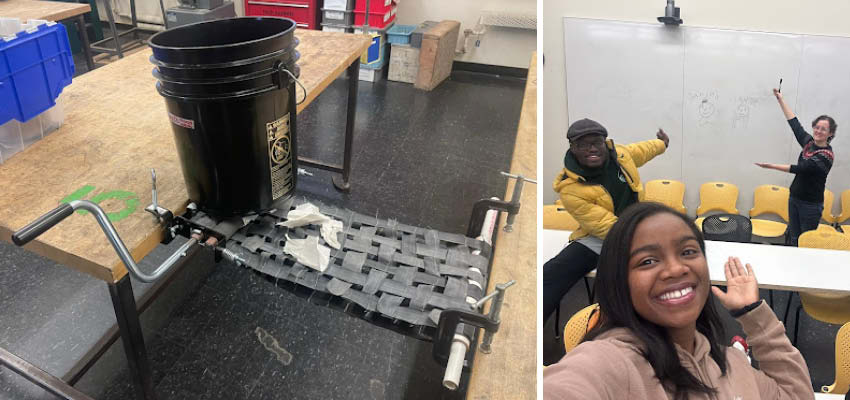
Contact
Dan Sweeney, MIT D-Lab Lecturer and Research Scientist
Olyvia J Hanken-Arlen, Project team member
Joshua Kuffour, Project team member


